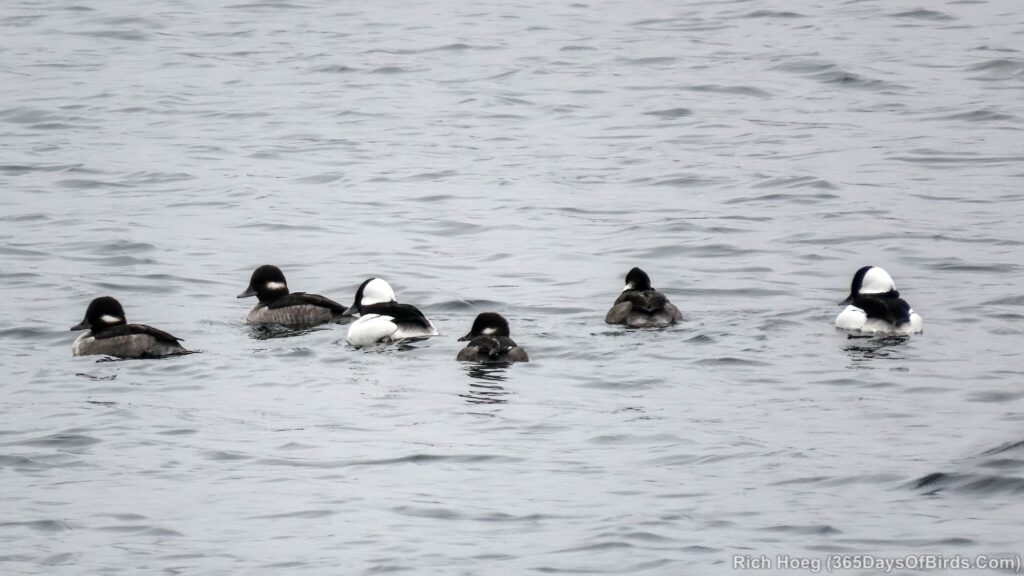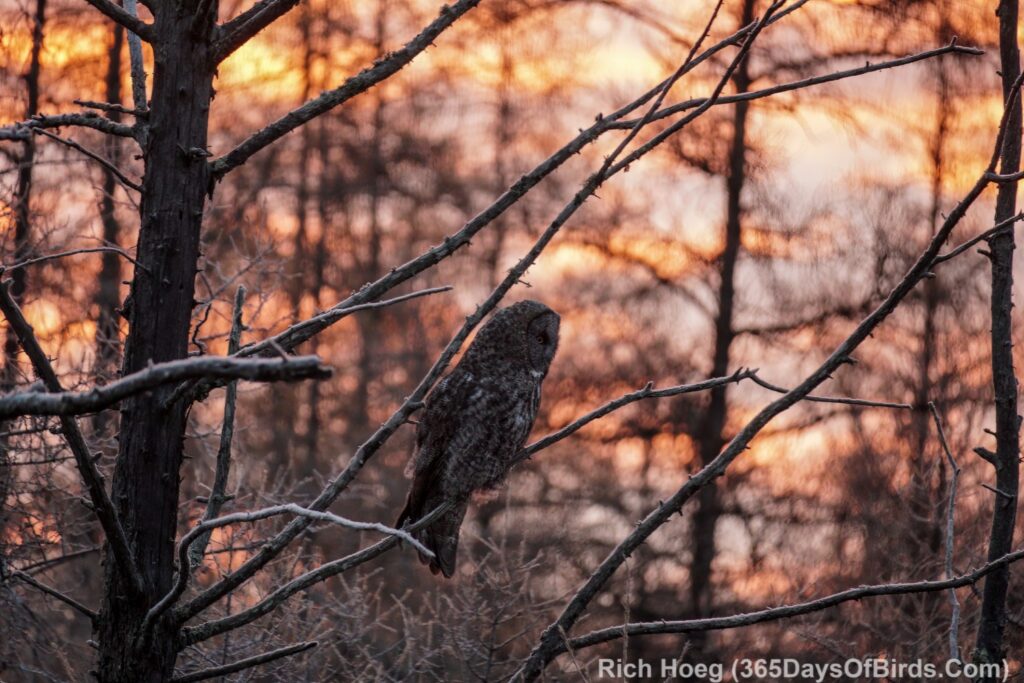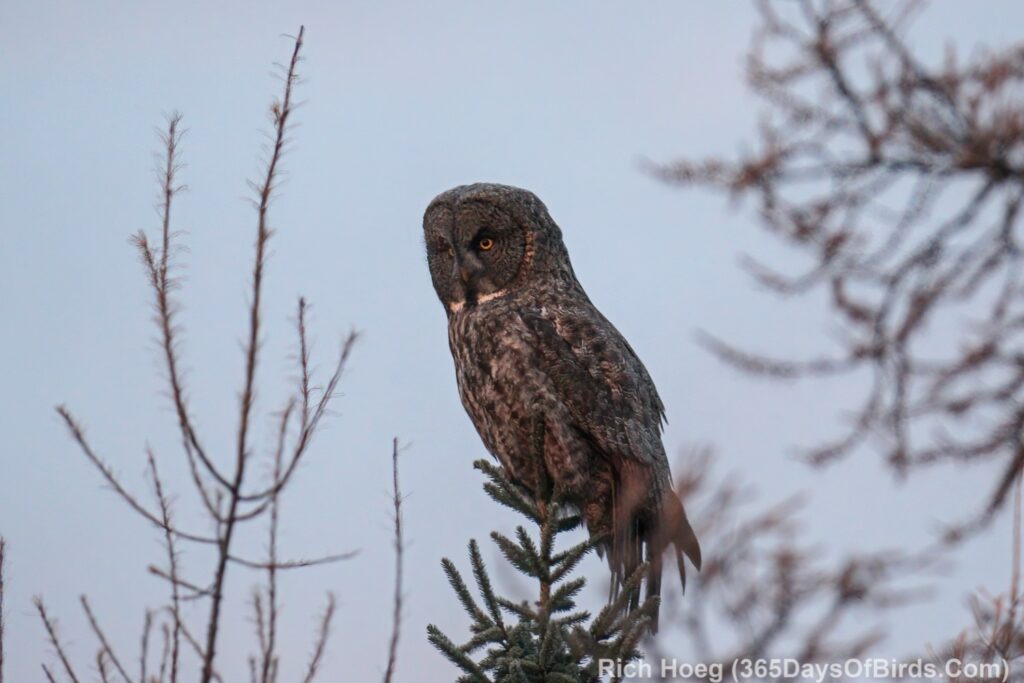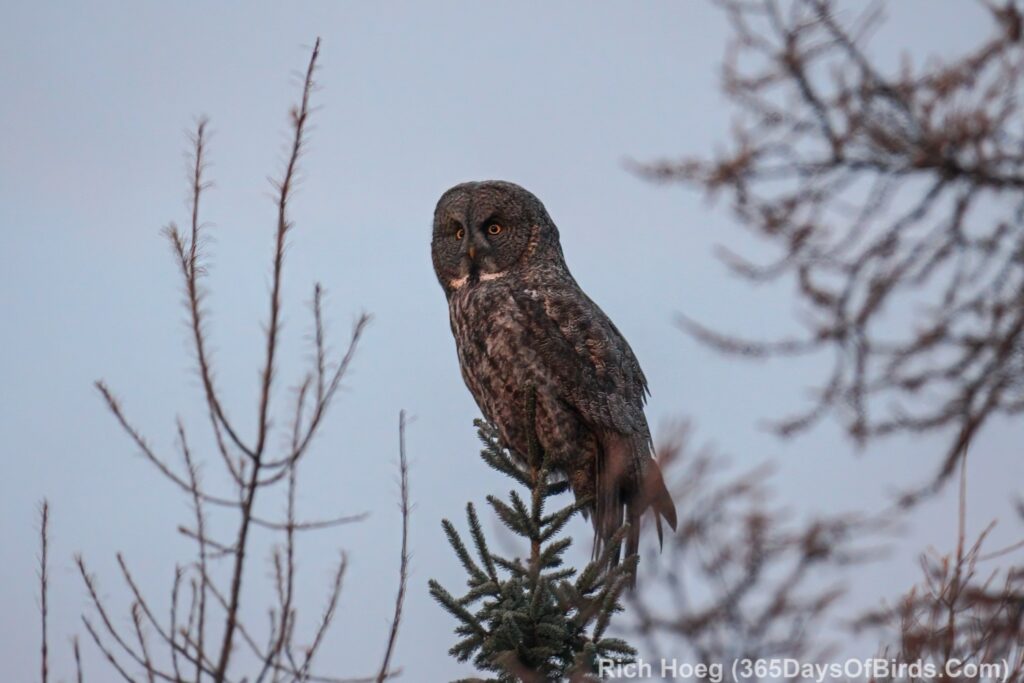Ever have a “blowout birding” trip? Molly and I are experiencing just such a trip right now. We love to travel up the shore of Lake Superior each November and stay at a cool Scandinavian modern apartment. November is the dead season time on the shore, which we love. The leaf peepers are gone, and the skiers / snowmobilers won’t arrive till shortly before Christmas. Grand Marais is only 1 hour and 50 minutes from our home, and while it would be an easy day excursion from our house, the getaway allows us to totally relax and enjoy each other
Okay, why a “blowout”? When we arrived last night there were 40 mph winds blowin gin off Lake Superior. As the winds picked up moisture they generated an early winter storm. The southerly headwinds to migration insured winter birds that visit our area stayed in Canada. The deep snow meant exploring remote backroads off the Gunflint Trail were not possible. While we did drive up the Gunflint Trail and took a shorter hike on a plowed dirt road, even that hike was shortened when we started slipping, and my case falling, on the ice underneath the snow. Thus, both birding and exploring are out of the question and we returned to our lodging.
Eventually cabin fever forced me out into the dizzle and I sat in my car next to the Grand Marais harbor. One lone bald eagle enjoyed scaring hundreds of gulls. Finally a flock of Buffleheads stopped nearby and snacked on whatever tasty bits they found on the harbor bottom. Thus, my camera did finally get a workout.
I am back at our apartment, The Aurora at the 3 Sisters. Please realize Molly and I are still having a most excellent time. We are spending lots of time together this afternoon without any distractions, which has always been too rare over our 40 years of marriage. Perhaps this blowout was a blessing?!




